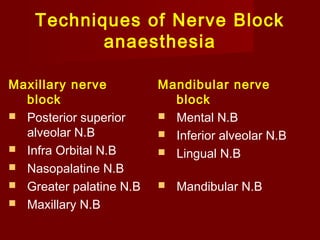

Mastering Anesthesia: Advanced Techniques for Patient Comfort
Anesthesia techniques have evolved significantly, playing a pivotal role in ensuring patient comfort and safety during medical procedures. In this article, we explore the advancements in anesthesia techniques, the diverse methods employed, and the emphasis on tailoring approaches for individual patient needs.
The Evolution of Anesthesia Techniques
Over the years, anesthesia techniques have undergone remarkable evolution. From the early days of ether and chloroform to the modern era of sophisticated medications and monitoring equipment, the field has continuously refined its methods. Today, anesthesia is a specialized discipline that employs a range of techniques to meet the diverse needs of patients undergoing various medical interventions.
General Anesthesia: Inducing Controlled Unconsciousness
General anesthesia remains a cornerstone of modern surgical procedures. Anesthetics are administered to induce a state of controlled unconsciousness, ensuring that the patient feels no pain and is unaware of the surgical proceedings. Advanced medications and precise monitoring allow anesthesiologists to tailor the depth of anesthesia to each patient’s unique requirements.
Regional Anesthesia: Targeted Pain Relief
Regional anesthesia focuses on numbing specific regions of the body, providing targeted pain relief while allowing the patient to remain conscious. Epidurals and spinal anesthesia are common forms of regional techniques, frequently employed in procedures such as childbirth, orthopedic surgeries, and certain abdominal surgeries. These techniques offer advantages such as reduced postoperative pain and faster recovery.
Local Anesthesia: Minimizing Discomfort in Specific Areas
Local anesthesia is used to numb a small, specific area of the body, often for minor procedures or diagnostic tests. By blocking nerve signals in the targeted region, patients can undergo certain interventions with minimal discomfort while remaining fully conscious. Local anesthesia is commonly employed in dermatological procedures, dental work, and minor surgeries.
Monitored Anesthesia Care (MAC): Personalized Sedation
Monitored Anesthesia Care (MAC) involves providing sedation and analgesia to keep patients comfortable during certain procedures while allowing them to remain responsive. This personalized approach is often used for interventions such as endoscopies or minor surgeries. Continuous monitoring ensures that the level of sedation is precisely controlled.
Balanced Anesthesia: Tailoring Medications for Optimal Outcomes
Balanced anesthesia is an approach that involves using a combination of medications to achieve the desired effects while minimizing side effects. By combining drugs that induce unconsciousness, provide pain relief, and maintain muscle relaxation, anesthesiologists tailor the anesthesia plan for each patient’s needs. This approach aims to optimize the overall anesthesia experience.
Pediatric Anesthesia: Addressing Unique Considerations
Administering anesthesia to children requires special considerations due to their physiological differences. Pediatric anesthesia specialists are trained to adjust dosages and techniques to ensure safety and effectiveness for younger patients. Creating a comfortable and reassuring environment is crucial to mitigate anxiety in pediatric patients undergoing medical procedures.
Obstetric Anesthesia: Safeguarding Mother and Child
Anesthesia in obstetrics is dedicated to providing pain relief during childbirth and certain obstetric procedures. Epidurals and spinal blocks are common techniques used to manage pain while maintaining the safety of both the mother and the unborn child. Obstetric anesthesiologists play a vital role in supporting a positive birthing experience.
Technology in Anesthesia: Enhancing Precision and Safety
Technological advancements have significantly contributed to the field of anesthesia. Monitoring devices, infusion pumps, and anesthesia delivery systems have become more sophisticated, enhancing precision and safety. These technologies allow anesthesiologists to closely monitor vital signs, administer medications with precision, and respond promptly to changes in the patient’s condition.
Education and Training: Ensuring Competence and Expertise
Anesthesiologists undergo extensive education and training to master the intricacies of anesthesia techniques. Continuous professional development ensures that practitioners stay abreast of the latest advancements, safety protocols, and best practices. The commitment to ongoing learning contributes to the competence and expertise of anesthesia professionals.
Explore more about Anesthesia Techniques at cloudfeed.net
For a deeper understanding of anesthesia techniques, their evolution, and their crucial role in medical procedures, visit cloudfeed.net. This platform offers valuable resources, articles, and insights into the world of anesthesia, empowering individuals to make informed decisions about their healthcare experiences.
